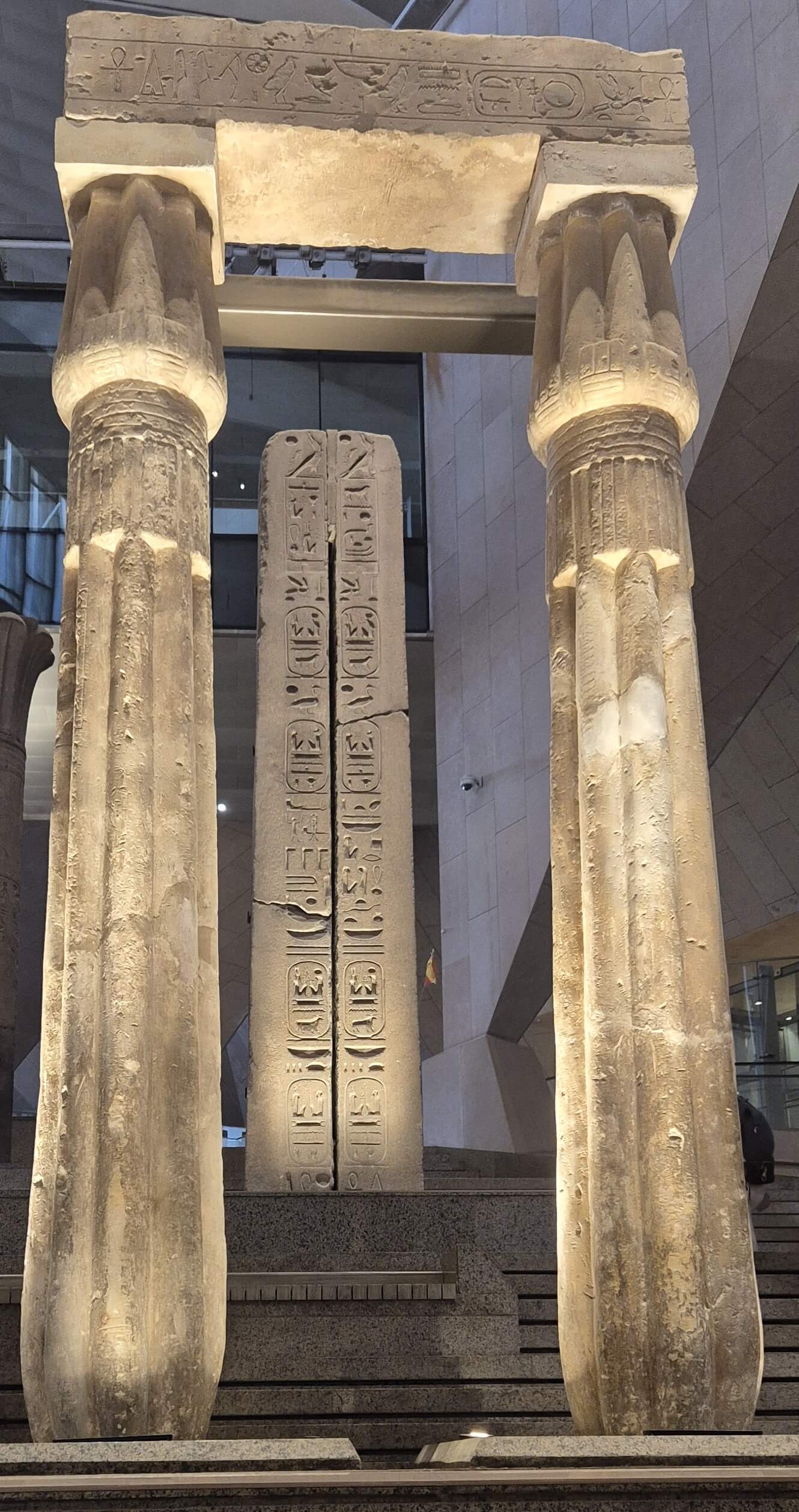
GEM 6779
Columns & Lintel of King Sobekemsaf I
These architectural elements—two columns and a lintel—originally formed part of a monumental colonnade surrounding the courtyard of the Temple of Montu, the war god of ancient Egypt, at Medamud, near modern-day Luxor. The columns, made from sandstone and carved to resemble bundles of papyrus stems, speak to a sacred design language that tied architecture directly to the natural and divine worlds.
Although the temple's foundations date back to the Middle Kingdom, this specific set of columns was reused during the Second Intermediate Period. The original creators were likely active during the 13th Dynasty (c. 1718–1711 BCE), specifically under King Sobekhotep III. However, centuries later, during the 17th Dynasty (c. 1577–1561 BCE), these colu ... Entdecken Sie mehr mit Premium!
Entsperren Sie die vollständige Geschichte dieses ArtefaktsWerden Sie Premium-Mitglied, um auf die vollständige Beschreibung, Audioguides und exklusive Inhalte aller Artefakte zuzugreifen.Erhalten Sie vollen Zugriff auf Audio und Beschreibung der wichtigsten Artefakte des GEM für nur 1,99 $
Suchen Sie ein weiteres Artefakt?